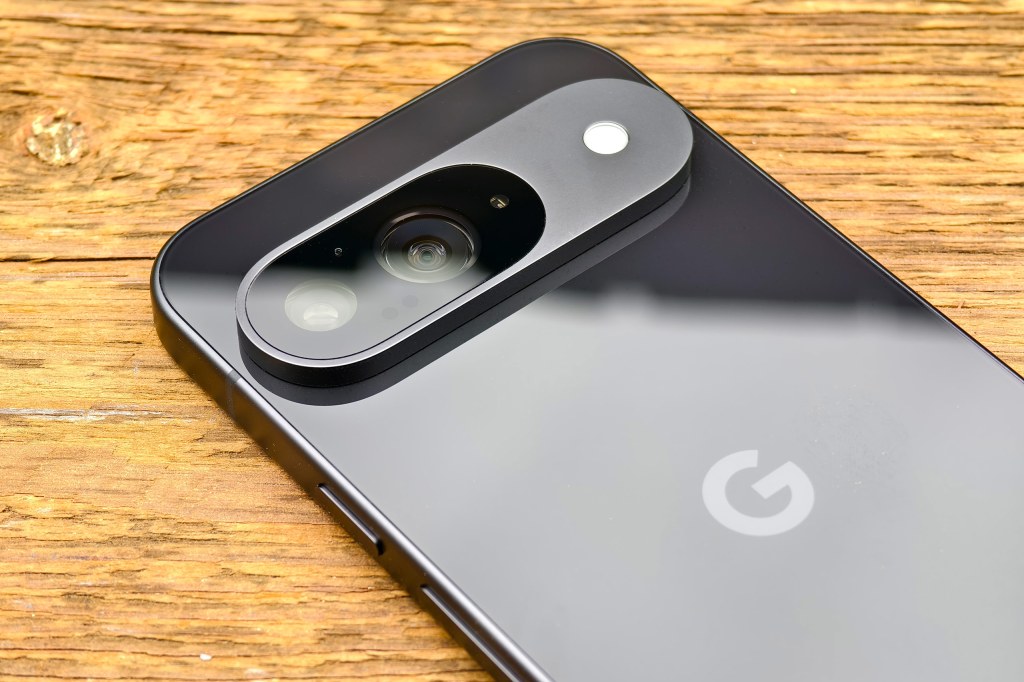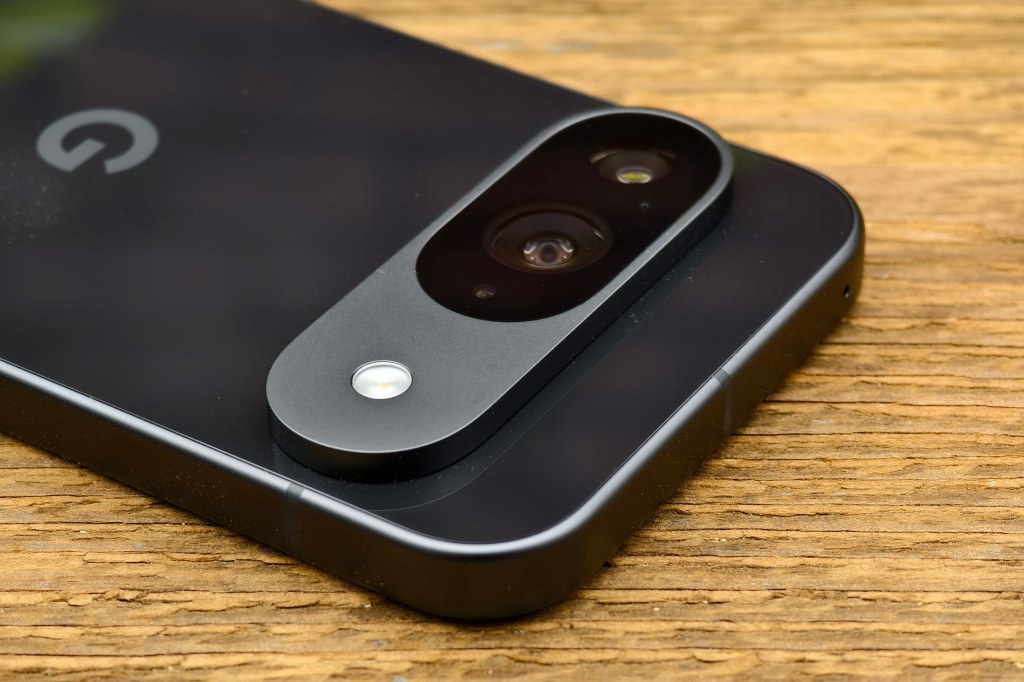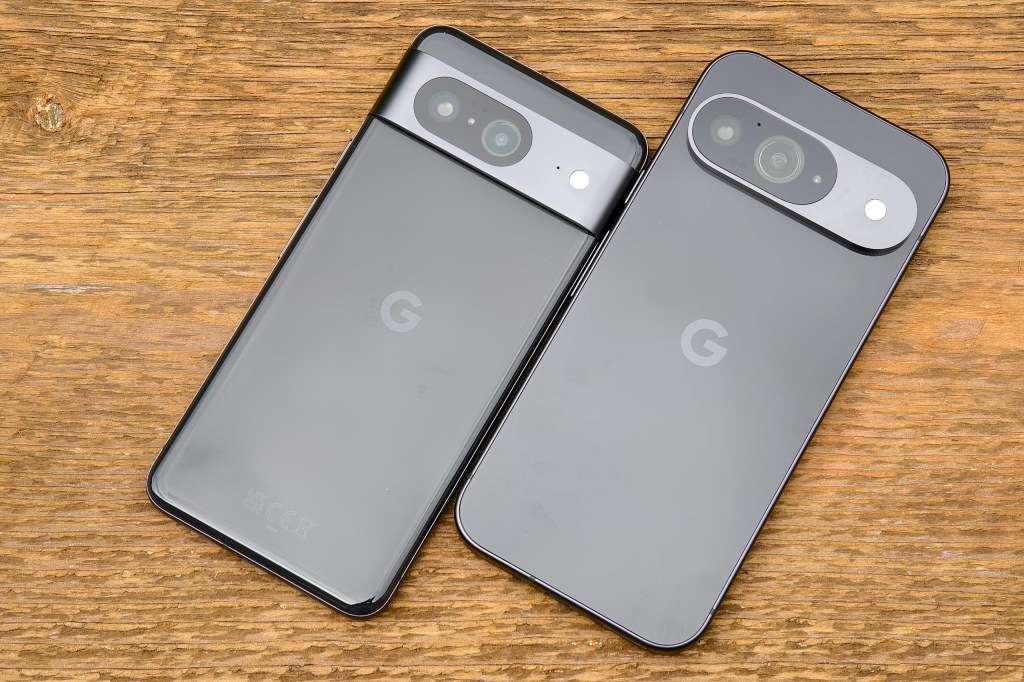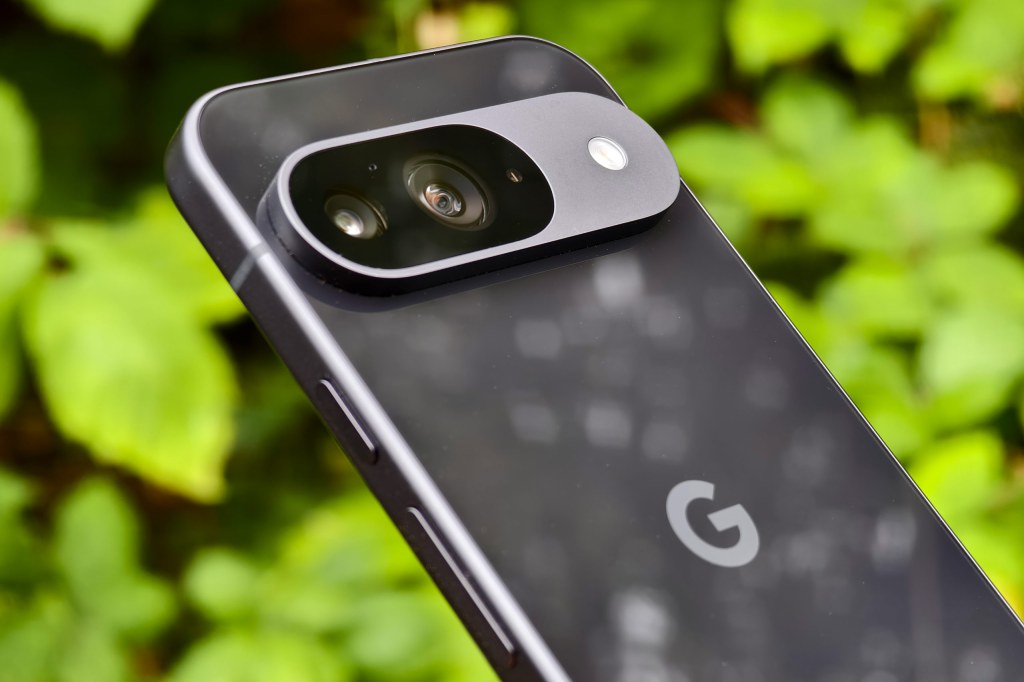Amateur Photographer verdict
It’s a great phone, but where is the telephoto camera, or manual controls that you get with other phones that are often cheaper?- Google Pixel phones take great photos
- Macro mode (like the Pixel 8)
- 2-3x digital zoom works well
- AF now added to selfie camera
- 7 years of updates
- No manual mode
- Lacks storage (128GB or 256GB are the only options)
- Price increase (+100) over last year
- Other phones this price have telephoto cameras
It’s well known by now that Google Pixel phones are some of the best phones for photography, particularly with easy-to-use features that help us take better photos. However, it’s the hardware line-up that leaves the Pixel 9 in an awkward limbo, more expensive than the 8 Pro, and lacking in zoom and storage.
At a glance
- 50MP main camera, f/1.68, OIS (1/1.31inch)
- 48MP ultra-wide, f/1.7, with macro AF (1/2.55inch)
- 10.5MP f/2.2 selfie camera with AF
- 4K 60fps video recording
- 6.3-inch, 6-120Hz, 1800 nits peak brightness, Gorilla Glass Victus 2
- 4700mAh battery, 45W charging, wireless charging
- Google Tensor G4 processor, 12GB RAM
How we test phones
We review smartphones from the perspective of choosing one for its photography and camera performance. We look at what the Google Pixel 9 offers, and the features included for photography and video, paying particular attention to the cameras on the phone, photo editing capabilities, as well as the output from each different lens, and features offered.
Google Pixel 9 Features
The Google Pixel 9 matches the 9 Pro in size, with the same size screen, and it even uses the same cases as the 9 Pro, however, it features a dual camera setup on the rear, rather than the triple camera setup. The main thing to note about the Google Pixel 9 is what’s lacking, and we’ll start by comparing it to the 9 Pro.
Here’s how the Google Pixel 9 compares to the Pixel 9 Pro:
| Google Pixel 9 | Google Pixel 9 Pro | |
|---|---|---|
| Screen | 6.3inch 60-120Hz, 1800nits | 6.3inch 1-120Hz, 2000-3000nits |
| Main camera | 50MP main camera, f/1.68, OIS (1/1.31inch), 2x optical quality | 50MP main camera, f/1.68, OIS (1/1.31inch), 2x optical quality |
| Ultra-wide camera | 48MP ultra-wide, f/1.7, with macro AF (1/2.55inch) | 48MP ultra-wide, f/1.7, with macro AF (1/2.55inch) |
| Telephoto camera | None | 48MP telephoto, f/2.8, 5x telephoto, OIS (1/2.55inch), 110mm equivalent. 10x ‘optical quality’ with 5x lens |
| Selfie-camera | 10.5MP selfie with AF (95°) | 42MP selfie with AF (wider, 103°) |
| Battery | 4700mAh | 4700mAh |
| RAM | 12GB | 16GB |
| Storage | 128/256GB options | 128GB-1TB options |
| Additional | None | Pro controls, plus other features (see below) |
The Pixel 9 doesn’t support 8K upscaling option, nor Video Boost (Cloud software features), nor Night sight video (despite using the same cameras) as the 9 Pro model.
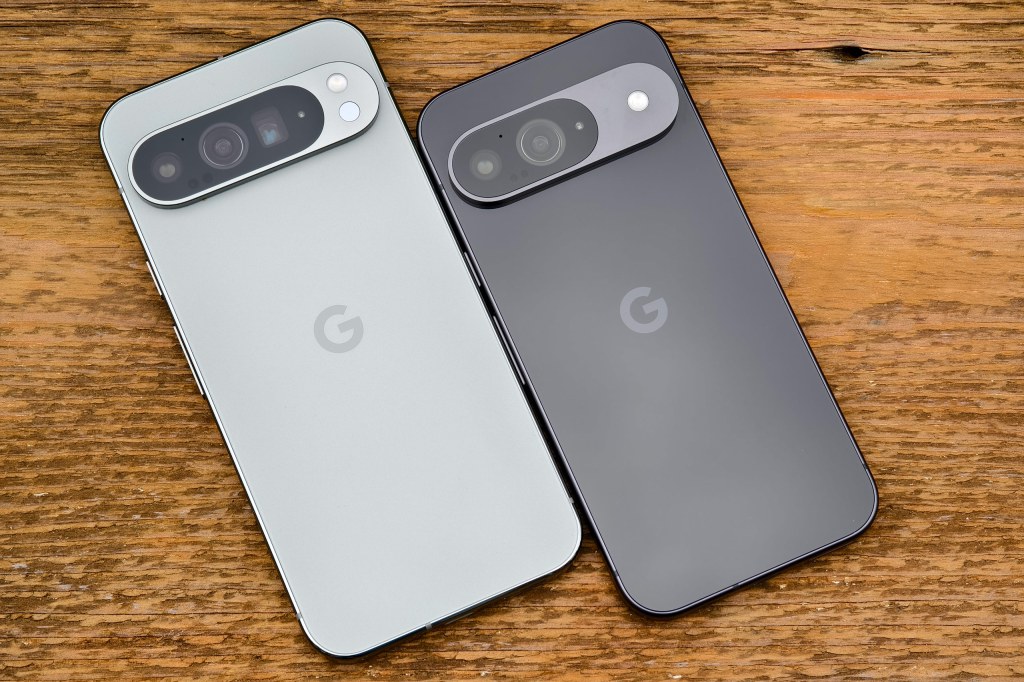
Now onto the Pixel 9 cameras…
The Google Pixel 9 has two lenses on the back, both with bright apertures of roughly f/1.7, with an ultra-wide and a wide-angle camera. Looking at the EXIF information, the ultra-wide gives a 12mm equivalent, while the main camera gives 24mm equivalent, both wide-angle lenses compared to standard cameras. The main camera has a larger sensor, which is 1/1.31inches, so quite large, but not as large as 1inch sensors found on some premium phones.
Camera app…
The photo app gives quick access to different shooting modes, and makes slow-motion photography, as well as night photography incredibly easy. You can take these shots handheld, without the need of a tripod, but if you do use a tripod you can use the astrophotography mode for even longer shots.
AI features…
Like the Pixel 9 Pro XL, and 9 Pro, the Pixel 9 is full of AI features, as well as useful photo editing and shooting features. There are more features found on the Pro models, as Google has deemed them only available on Pro versions of the phone, even though they’re software based, rather than hardware based features.
However, for the most part, you get a whole range of really great photography features, including Magic Editor, and a range of on-phone as well as on-cloud editing options. The on-phone editing options are much quicker and easier to use, and don’t require images to be backed up to the cloud before editing.
We go into more detail in the Pixel 9 Pro and Pixel 9 Pro XL reviews for more detail.
Performance and Image Quality
Google Pixel phones give great results, with really pleasing colours that aren’t as saturated as Samsung phones, and colours are generally consistent between the different cameras.
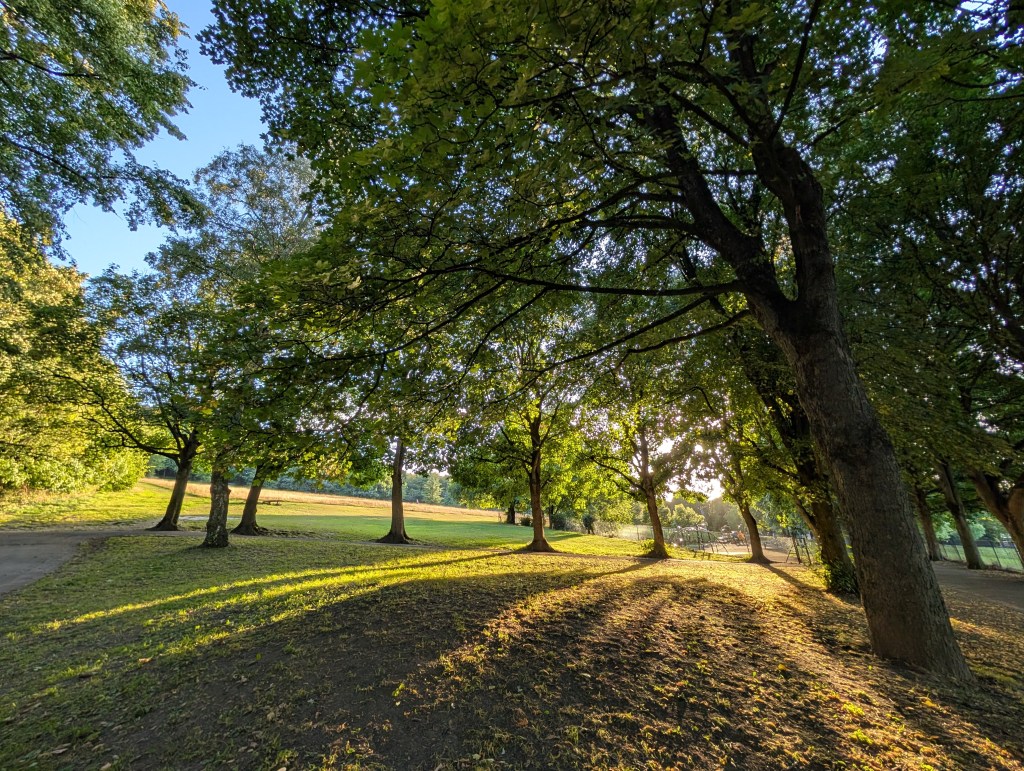
The ultra-wide-angle lens shows some distortion into the corners, and purple fringing, but this is fairly typical for this type of lens, and will be more visible with some subjects more than others, such as trees and leaves in the corner of the frame. This won’t matter if you’ve got blue skies in the corners of the frame.
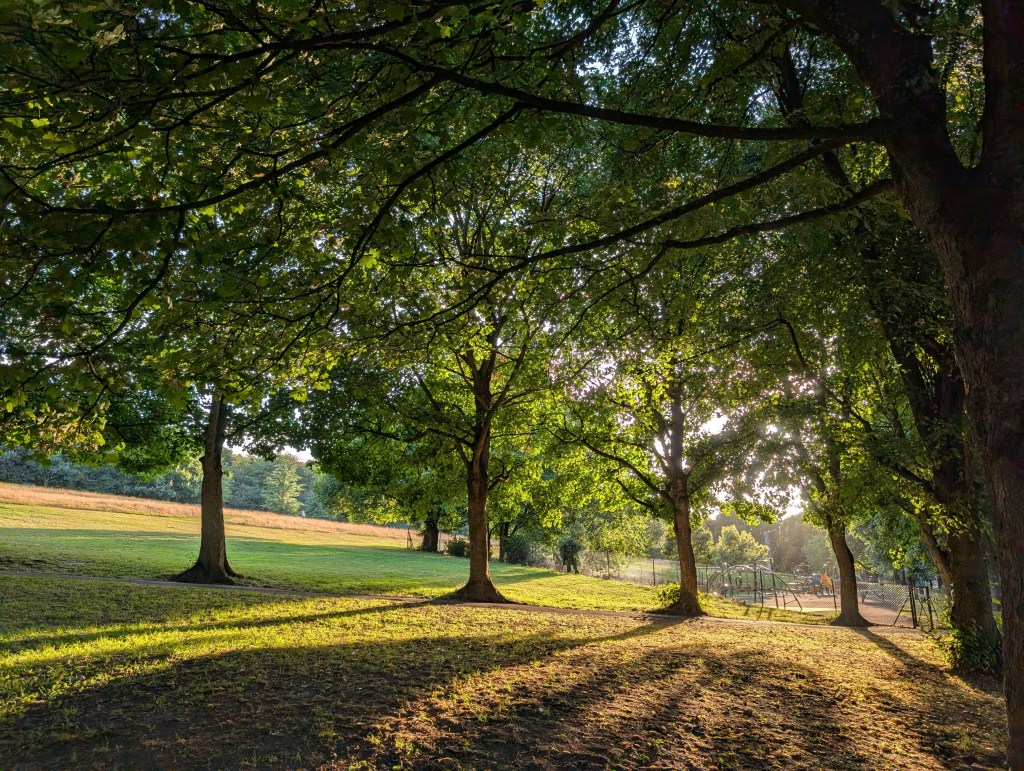
The main camera gives great results in a variety of conditions, whether that’s bright sunny days, or in low-light.


In low-light both the ultra-wide and the main camera give good results, with the main camera giving the best results, thanks to a larger sensor.

The selfie camera performs well, and thanks to the auto-focus, it gives better results than phones with fixed focus. You can take photos of yourself or group shots and not worry about whether you’re in the perfect spot for focus.

Macro performance is acceptable, but nothing special, and this is the same across the 9, 9 Pro and 9 Pro XL, as all phones use the ultra-wide-angle camera and crop into the image. This gives a photo with pixelated detail and a lack of fine detail. Other phones that let you use the telephoto camera for close-ups give noticeably better results.
Value for money
In terms of pricing, you’re looking at $800 / £800, which is a little steep, considering almost phone at this price point offers a triple camera setup on the rear, with a third telephoto camera (excluding iPhone 16/16 Plus). If you look at Samsung, Motorola, Xiaomi and everyone else, even last years Google Pixel 8 Pro can be found for less than this phone.
The Samsung Galaxy S24 – around the same price, or less, and comes with 3x telephoto camera, plus manual controls, plus AI features, plus 8K video recording, to name just a few of the features. What does the Google Pixel range of phones offer, that other Android powered phones don’t?
You could look at the 9 Pro if you like the size, but want that extra telephoto camera, or take a look at the Google Pixel 8 Pro, which offers a telephoto camera, as well as being on offer for less than the 9.
Verdict
Ultimately, whilst the Google Pixel 9 is capable of taking some great photos, with another price increase over last years model, it feels overpriced compared to the competition, and 128GB is not good value for money these days.
The Google Pixel 9 is a small flagship phone without a 3rd telephoto camera. This is fundamental in what’s missing from this camera. All other brands (excluding Apple) will aim to give you a triple camera setup on the back, often for less money than this. If this was a mid-range phone, I’d still want a telephoto camera on the back.
If this was a budget phone, then it would be entirely reasonable for there to only be a dual camera setup on the back. Even some budget phones (but not many) will set themselves apart by offering a telephoto camera. This is how far I feel Google have missed the mark with this flagship priced phone.
Sure the 2x digital zoom is impressive, and gives great results, but so is the 2x digital zoom on the Pixel 8a. What is there on the Pixel 9 to mean you should pay $300/£300 more for this phone, over the $500 Pixel 8a, and even at $500, you can find phones with triple camera setups, such as the Motorola Edge 50 Neo, Samsung Galaxy S22, and others.
And of course, you’re getting great photo quality with some of the best AI features available, but the phone doesn’t feel like value for money any more. Google’s phones used to offer flagship features at a lower price than the competition, but the prices keep going up every year, and the value proposition has disappeared.
If you choose a Samsung phone, you’re also going to get some impressive AI features, manual controls (not just on the Ultra model), and you’re going to get a 3x telephoto camera. So why choose the Pixel 9? The base model has 128GB, which is just not good, especially if you’re interested in video recording.

On the plus side, you do get 7 years of updates, but how often do you keep a phone for 7 years, and if you do, getting one with a telephoto camera would be a wise move.
Last year the Pixel 8 was $699 / £699 (RRP), which felt reasonable for a mid-range phone, but $799 / £799 (RRP) feels like we’re entering the premium end of the market, but not getting the features that usually come with premium phones. If the price drops significantly, this would be a great buy.
It’s difficult to recommend a premium phone (with a premium price) that doesn’t feature a telephoto camera on the back. Just buy the 9 Pro, 8 Pro or a phone from a different brand and you’ll get more. Now that the 9 Pro is the same size as the 9, there’s very little reason to choose this phone, unless you actually hate having a telephoto camera.

Specifications
| Main camera | 50MP main camera, f/1.68, OIS (1/1.31inch), 24mm equivalent, 2x ‘optical quality’ with 1x lens |
| Ultra-wide-angle camera | 48MP ultra-wide, f/1.7, with macro AF (1/2.55inch), 12mm equivalent |
| Selfie camera | 10.5MP f/2.2 selfie camera with AF |
| Video | 4K video recording (60fps) (front/rear) |
| Screen | 6.3inch screen, 60-120hz, 1800nits, Gorilla Glass Victus 2 |
| Battery | 4700mAh battery |
| Processor | Google Tensor G4 processor, 12GB RAM |
| OS | Android 14 – with 7 years of updates |
| Dimensions | 152.8 x 72 x 8.5mm |
| Weight | 198g |


